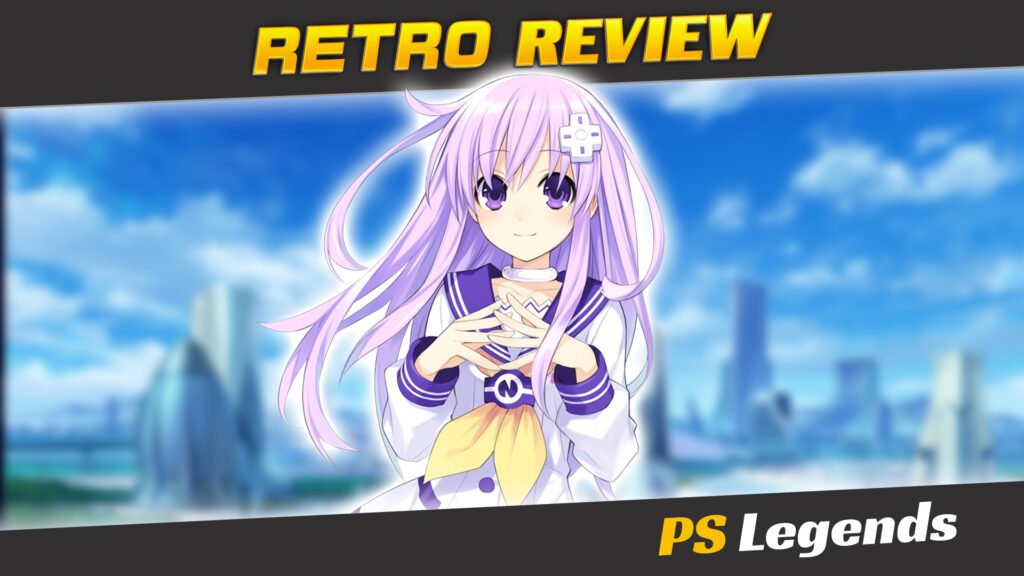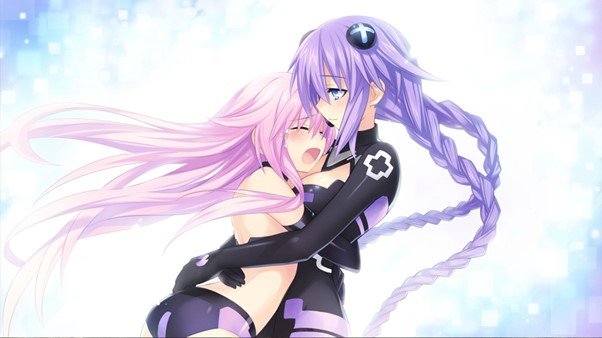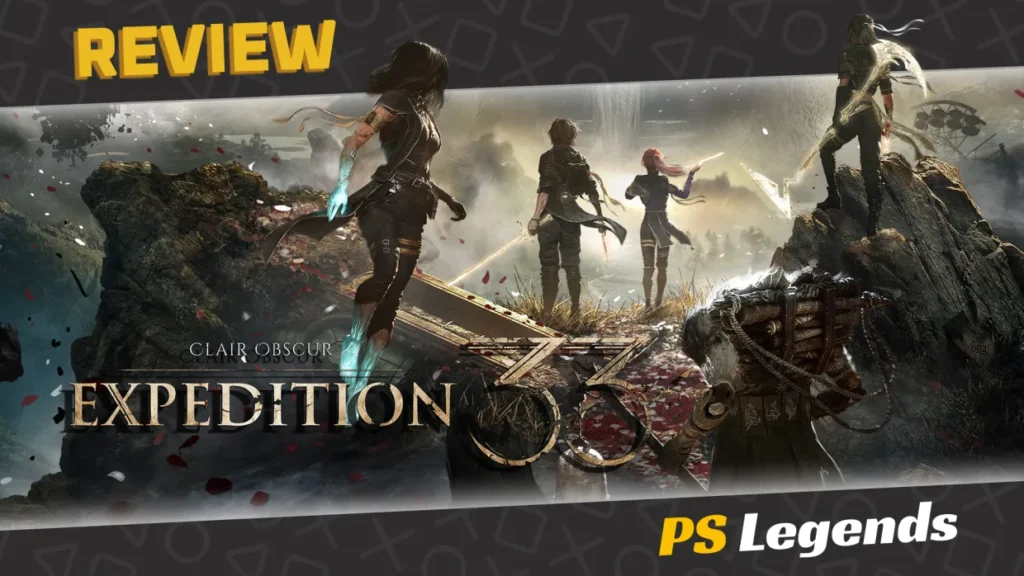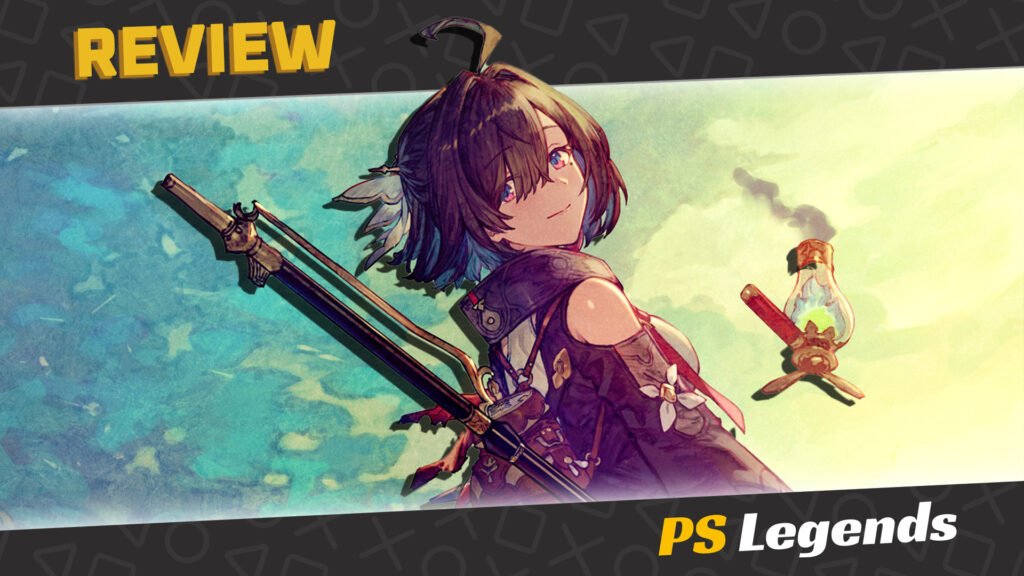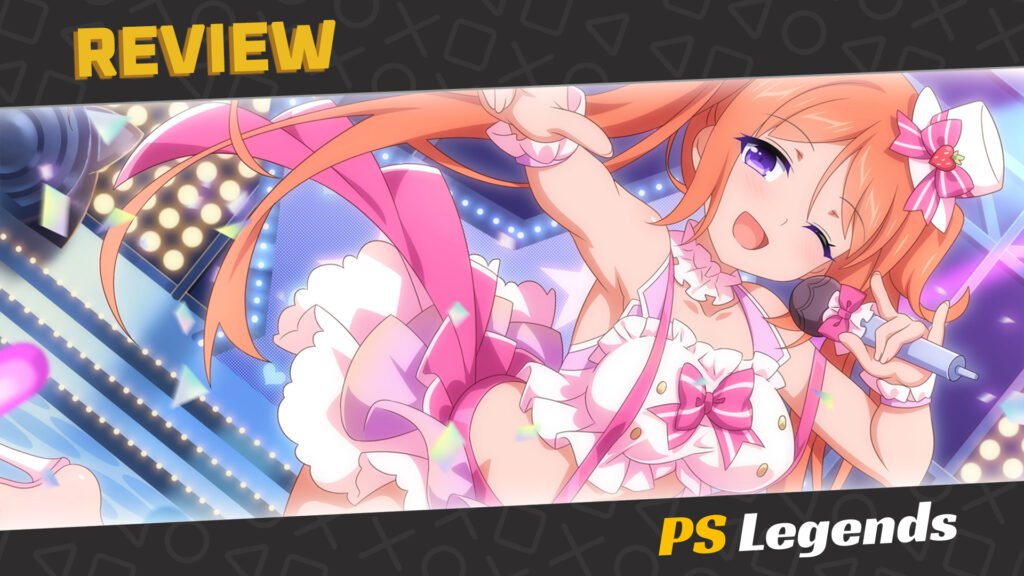Less than a year after the release of the original Hyperdimension Neptunia, a surprising follow-up materialised on the shelves of the shops that actually bothered to stock it. Is this a rushed sequel or a weak attempt at a cash-in? Neither, it would seem. The strangest thing to understand about Hyperdimension Neptunia mk2 is that it isn’t a sequel. It’s a kind of ‘reboot’ of the previous game, set after the events of the previous game but in an alternative universe entirely. The characters are the same but the story, the graphics engine and the combat are all completely new.
On This Page
Introduction
Mk2 attempts to correct any aspect of the previous game that gamers may dislike. The combat difficulty has been drastically reduced, random battles are gone, and the playable character roster has doubled in size. You’ll still be playing as (all female) physical manifestations of game consoles from each manufacturer, but you’ll also be playing as their little sisters too who represent the handheld consoles, with Nepgear (based on Sega’s Gamegear) being the new protagonist.
So, why reboot a new game? Well, the last game had Sega contributing from behind the scenes, chipping in nostalgic characters and other ideas whenever possible, something that Mk2 lacks. But is Mk2 the worse game without it? Quite the opposite. Co-developers Nippon-Ichi Software, Gust and Compile Heart can now do what they do best without interference from Sega. This means a fresh, complete story that becomes deeper and more extraordinary the further players go, and superb characters, both new and less so.
The same style of a world based on the real gaming industry is ever-present, yet beyond every cliché there is a message. Beyond every parody, there is a purpose. What appears at first to be a story about saving siblings from evil only grows into a grand and meaningful adventure. It’s just a shame that the original Hyperdimension Neptunia’s storyline is now no longer considered part of the main canon.

Story
The plot largely ignores the previous game’s story, and this time focuses on the war against videogame piracy. In a dimension where the console war (which featured heavily in the previous game) was little more than a friendly rivalry between nations, the four CPUs (goddesses) of the world of Gamindustri, unite to battle the crime syndicate ASIC, which is slowly taking over the world by ensnaring the people with free pirated videogames. This piracy has ruined the world’s ‘share’ economy, and worse still, lowered belief in the CPUs by increasing belief in ASIC.
ASIC stands for the ‘Arfoire Syndicate of International Crime’, a group dedicated towards the resurrection of the CPUs’ late nemesis, Arfoire. It is led by four powerful deities, the honourable CFW Brave, the aggressive CFW Judge, the lecherous CFW Trick, and the mysterious CFW Magic. Without belief, the CPUs are in a weakened state, yet daringly attack ASIC together, only to be defeated and trapped in the Gamindustri Graveyard, a place where forgotten consoles, games and characters go to die.
Without the CPUs, the world’s fate lies in the hands of their younger sisters, the CPU Candidates, led by Neptune’s younger yet more mature sister, Nepgear. They must restore their respective nations to their former glory by locating the ‘mascot’ disc for each landmass, stop ASIC’s influence and rescue their sisters, all while trying to simply get along with one another.
As Nepgear travels across Gamindustri to find the mascots, she also crosses paths with several fellow adventurers, Nisa, Gust, 5pb, Cave, and Falcom, who she befriends. They eventually join Nepgear’s party, and together with the power of the mascots, Nepgear prepares for her final stand against the evil agents of ASIC.

Gameplay
The combat has (thankfully) been completely re-designed from scratch. You can now take four characters into battle rather than the previous game’s three. Despite being turn based, the freedom of movement and position-based strategy elements provides more flexibility and control over the pacing you prefer.
Speedy players can rush in and position accordingly, while more heavy thinking players can take their time and factor in their characters abilities, stats, enemy range, or the area of effect an attack or ability can cover etc. With more defensive options available and a vastly easier to use interface, Mk2’s overall difficulty has been drastically reduced when compared with its predecessor.
Special attacks are as effective as they are visually pleasing, and very useful in quickly wiping out larger groups of enemies. Sadly, this makes one of the series’ key features largely unnecessary, Transformation. Certain characters can activate ‘HDD mode’ to transform into more powerful scantily-clad goddesses, but since your turns are better spent taking out the enemies with your already very strong special attacks, you simply won’t need to.
There are no random encounters this time; all enemies are visible. If an enemy collides with the character from behind, the party will be at a minor disadvantage. Striking an enemy in the field with a well-timed first strike will give the party an edge in battle, and if it’s a weak enemy the attack can destroy them outright and thus avoid combat altogether.
There are many characters to recruit and interact with. One interesting new feature is the Chirper system, which feels like a kind of virtual Twitter. Cycling through characters’ text bubbles as you progress with the story can trigger optional cutscenes which help to build relationships, reveal back stories, and unlock some bonus content. There is also a mock Wikipedia too; ‘Nepedia’, which explains the vast history of the Hyperdimension Neptunia mk2 universe.
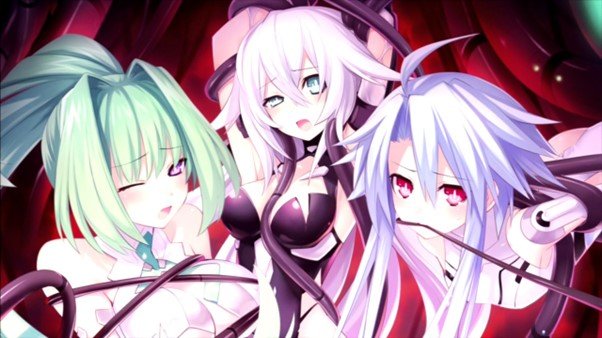
Graphics/Sound
Mk2 features a far greater number of characters and a completely redesigned world, a world that becomes freer to explore the more you progress through the story and is such a utopia of videogame universes that it even expresses its story and world through a combination of 2D and 3D art, as well as hybrids of 8-bit graphics and more advanced styles. While it doesn’t pursue to break new ground with visuals, it’s an art form no other videogame series had done before and expresses its artistic flavour so beautifully and creatively.
A niggle though is that the 3D cel-shaded engine used in combat often pushes its way into the usually 2D cutscenes, and sadly it’s not quite welcome. The 2D character models are some of the most highly detailed anime sprites ever seen in a game, and are greatly missed when replaced with low-resolution, low-detailed cel-shaded versions.
The music is a noticeable improvement, especially when compared with the dull, generic soundtracks of alternative JRPGs, with the opening theme song being particularly memorable (and incredibly catchy). There’s no faulting the voice acting either. The full cast returns from the previous game and the new characters are all performed with the same levels of energy and charm.
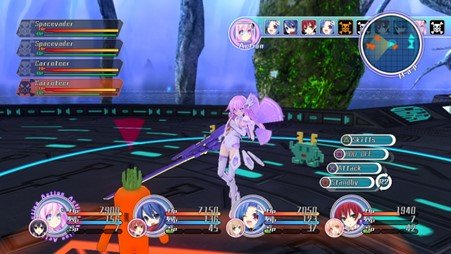
Replayability
With a New Game + option after finishing the game, a battle arena, several bonus dungeons and loads of DLC (some of which are free) there’s certainly plenty to keep you busy. In terms of overall lifespan, it’s actually noticeably shorter than the previous game by as much as 20 hours, with Mk2 requiring less than 40 hours to finish. That’s actually not a bad thing. The storyline doesn’t feel so thinly spread and the mandatory level grinding is a fraction of that of its predecessor. The shorter duration is also a much bigger incentive to try out the New Game + feature.
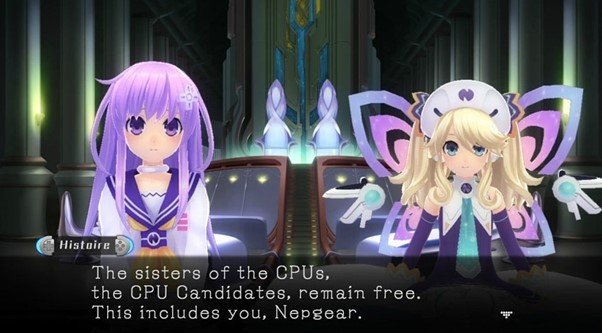
Conclusion
Hyperdimension Neptunia mk2 is a superb little JRPG. There are little imperfections here and there, but thankfully nothing that distracts from the game’s charm. However, there is one more issue with the writing that we should discuss before we wrap up, and it’s one that I’m really trying to tiptoe around. The style of comedy in the writing makes an unexpected change, and that’s not necessarily for the better. It’s here that some players may feel slightly awkward or perhaps even take offense if approaching with an incompatible mindset.
You see, former protagonist Neptune, who brought some excellent comedic dialogue in the previous game is absent for the majority of Mk2, with her shy, more serious sister Nepgear taking centre-stage this time. The series’ trademark humour must be found elsewhere. You’ll find fewer ‘boob’ jokes, for example, and instead a lot of emphasis on bi-curiosity amongst younger teenage girls, and even a few borderline-inappropriate lines referring to paedophilia from a particularly lecherous recurring boss monster.
Whilst it might be pretty standard nowadays to dress anime girls over 16 in revealing outfits, placing those same outfits on girls of slightly younger ages might just test the standards of a western audience. It’s important then to respect Mk2’s Japanese origins, and the versatile culture associated with it. Of course, one could also argue that Mk2 redeems itself through sheer originality.
Yes, there may be another handful of questionable design choices, but none of them are potentially game-breaking this time around. Hyperdimension Neptunia mk2 surpasses its predecessor in almost every way, making it one of the most solid, structured, and enjoyable RPGs of the PS3 generation. You might not be laughing quite so audibly this time around, but you’ll always be smiling, and completing this gem will leave you hungry for more, in a good way, of course.
Joys
- Clever storytelling and themes
- Loads of characters
- Great music and voice acting
Cons
- Character models are hit and miss
- Can be a bit controversial
